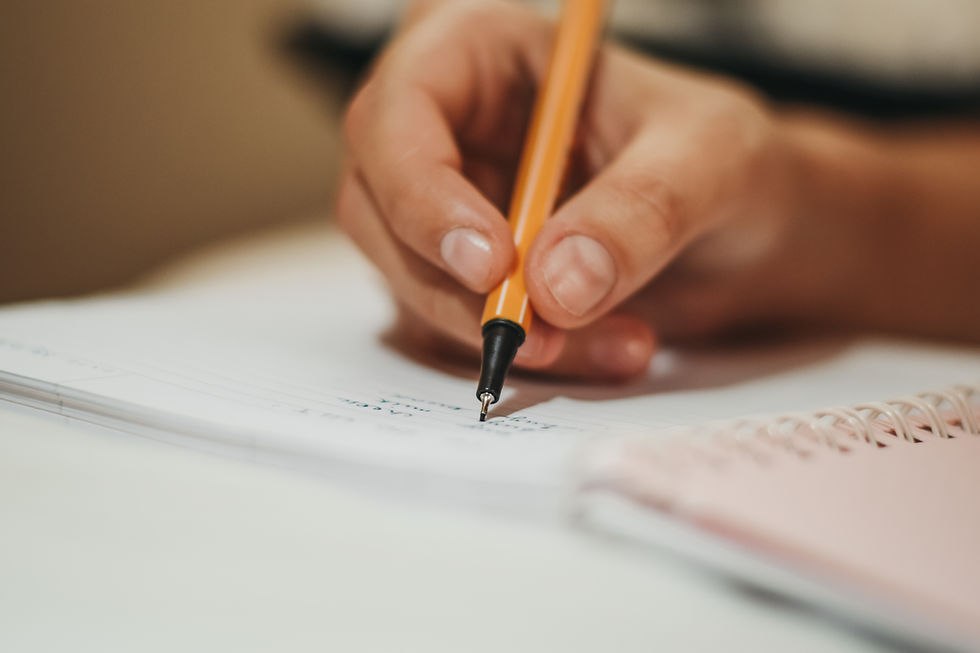Secure Relating: a tool for any attachment style
- rshepard

- Nov 11, 2022
- 4 min read
Inspired by Therapist Uncensored Podcast with Dr. Ann Kelley and Sue Marriott, episode 190 "Secure Relating, Not the Same as Secure Attachment with Ann & Sue."

When in conflict we often try to get more logical and defensive. Then our pre-frontal cortex goes offline, so our defensive is then emotional and protective.
Sue and Ann recommend some tips to help calm the nervous system, be present in our bodies, so that no matter what insecure or secure attachment style we have, we are able to interact while keeping our pre-frontal cortex online. Secure relating is what we choose to do in the moment instead of secure attachment which would be the patterns that have been wired in your brain from years of attachment. In the podcast Ann and Sue offer some tips to secure relate to help us move toward interacting out of security instead of our attachment styles.
When you are feeling charged in a conflict try:
Tip #1: Move towards warmth

Sue suggests feeling your back up against your chair, and leaning into it. Focus on the strength that your back provides to help calm you. Maybe put your hand over your heart and feel it beating. You are human. That means that you do not have to figure this out, you do not have to know the answer to the problem, you are beautifully imperfect, and that is okay. Feel the warmth of your hand, and remember that the person or people you are interacting with also are human. And let that warmth spread from your mind into empathy for the other person.
Tip #2: We not me

Often when feeling defensive we are doing just that, defending ourselves. Ann's suggestion is moving towards the "we," thinking through, "I am not alone, how can we work as a team to figure this out together?" When we are in conflict we often make the other person the enemy, and we all know how that turns out. If we decide to move towards the other person with the intent to work as a team we automatically lower our defensive weapons and walls to let them in.
Additionally, remind yourself that "we both have needs here, and we are co-regulating, I am not the only one who has needs and I also need to show up and be strong for them."
Tip #3: Bullet points not essays
In attachment it is our job to avoid flooding our partners. This means that we need to keep our messages to a minimum. This can be challenging for certain attachment styles, especially
insecure anxious attachment, because emotions are loud, the message feels loud, so if I just explain it thoroughly you will understand and then we will not be in conflict. Often the message that we bring is a bit long, more like an essay.
However, if we remember

"okay, they care about me and want to hear my perspective, and I want to present my message in a way that is digestible for them, so I am going to think of my message in bullet points instead of an essay."
If your partner is someone who uses an essay to describe, ask for what you need by saying "I want to hear you, but I am at my limit right now, would you be willing to share later, or in smaller bites?"
Tip #4: Slow it Down and think
If you feel yourself rushing in to solve a problem or avoiding the problem, neither of those option are relating to the problem in a healthy way. So if we slow it down, take a moment to consider these questions, then when we go to have the conversation we are actually connected

instead of complaining or attacking the other person. Consider these questions,
What is my ask? What do I feel? How does this relate to the other person? If this is a complaint about another person, what is their need in the scenario? Then try a soft start, by offering that empathy first before presenting your ask. This is not a suggestion to overthink, it is a check in before engaging.
Tip #5: Recognize the risk

Being intimate with someone is vulnerable and each person has complicated emotions. It's going to hurt to be close and intimate AND there are all of the benefits of it. Secure relating and secure attachment point back to the ability to be present and endure difficult emotions. With secure relating, in the moment you are choosing to move towards the other person with all the mess of their emotions and yours to engage in intimacy, and it will hurt. The questions is are we able to use tools to calm ourselves, co-regulate, and try to stay connected, or are we going to move towards them with our defensive weapons held high ready to defend that hurt? Maybe we can move towards the conflict with courage, knowing that it will hurt, but that the benefits of intimacy and closeness are worth enduring the moments of hurt. Remind yourself that you can love them, and be angry with them at the same time.
Part of this is letting go of the idea that relationships must be happy and pleasant all of the time, that is an unrealistic expectation. Disharmony can exist 70% of the time, but the repair is the important part, can we come back together? Hopefully by recognizing this it removes the panic and urgency. If we stay in disharmony, then we are not effectively repairing.
Hopefully these tips from Therapist Uncensored will help you try out secure relating in your next conflict. Check out the podcast for more information and to dive deeper into the topic of attachment.




Comments